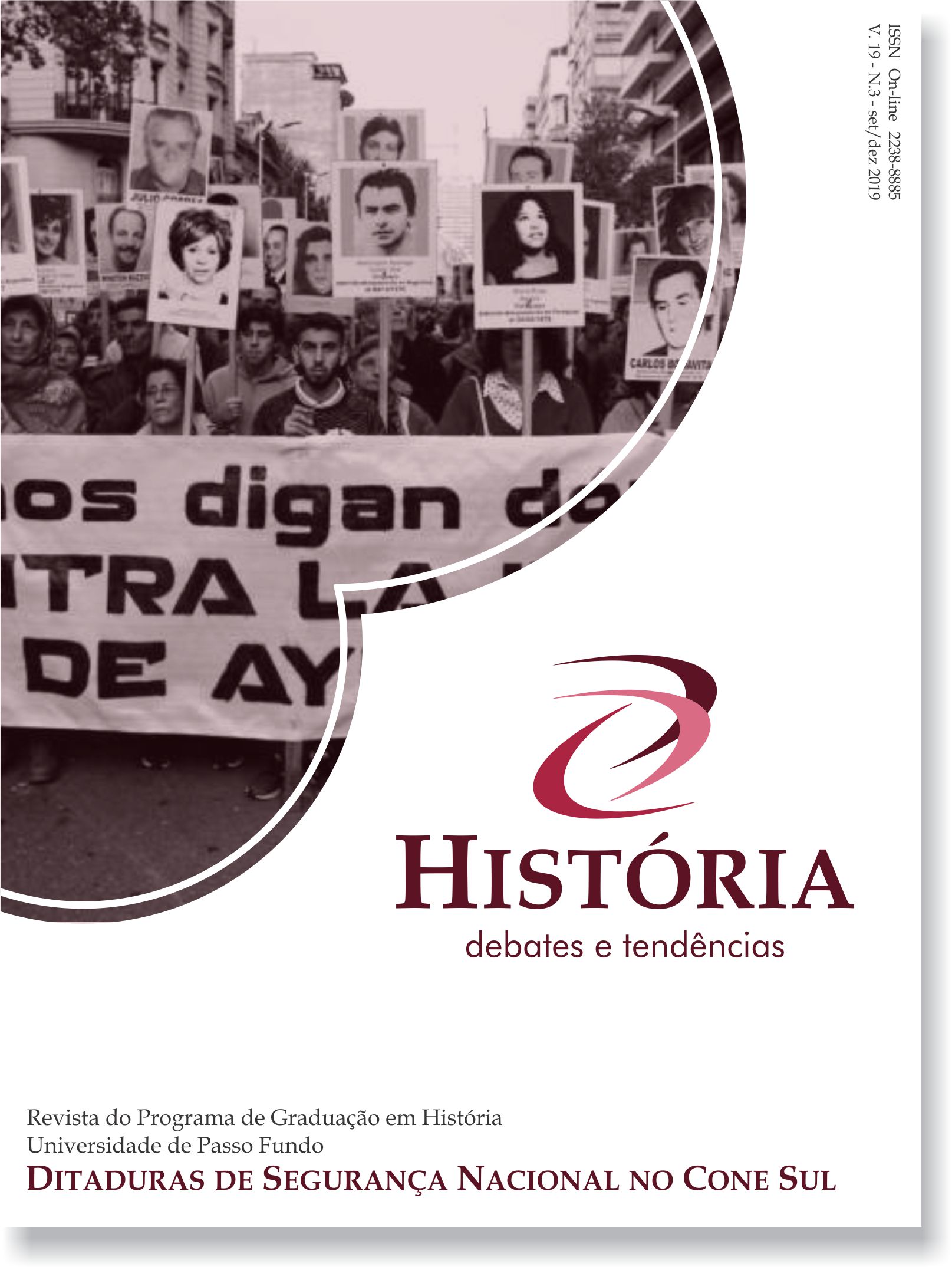As Res Gestae Diui Augusti: perspectivas sobre a obra
DOI:
https://doi.org/10.5335/hdtv.3n.19.9885Keywords:
Res Gestae, Otávio Augusto, PrincipadoAbstract
The proposal of this article is to problematize Octavius Augustu’s Res Gestae Diui Augusti. In this context, we will analyze the space of epigraphic inscriptions in the Roman Empire in order to understand the insertion of the RGDA and its visibility and circulation. Thus, the article establishes analysis processes concerning documentary typology and takes into account the historical context and form and content characteristics. Our central argument is that this object was a mechanism built to consolidate Octavius Augustu’s image, thus preserving his memory as a good ruler for later generations and distant regions from the empire.
Downloads
References
ARIÑO, B. D. Epigrafía Latina Republicana de Hispania (Collección Instrumenta – 26). Barcelona: Publicacions Universitat de Barcelona, 2008.
BUSTAMANTE, R. M. C. Práticas Culturais no Império Romano: Entre Unidade e a Diversidade. In: SILVA, G. V.; MENDES, N. M. (Org.). Repensando o Império Romano – Perspectiva Socioeconômica, Política e Cultural. Rio de Janeiro: Mauad: Vitória; Espírito Santo: EDUFES, 2006. p. 110-123.
CABANES, P. Introdução àHistória da Antiguidade. Petrópolis: Vozes, 2009.
CAMPOS, Carlos Eduardo da Costa. A estrutura de atitudes e referências do imperialismo romano em Sagunto (II a.C. – I d.C.). Rio de Janeiro: UERJ/NEA, 2014.
_____. Caesar Augustus: entre práticas e representações. Vitória: DLL/UFES; Rio de Janeiro: UERJ/NEA, 2014.
CANDAU, José M. Republican Rome: Autobiography and Political Struggles. In: MARASCO, Gabriele. Political Autobiographies and Memoirs in Antiquitaty. Leiden: Boston: Brill Companion, 2011. p. 121-160.
CITRONI, Mario; CONSOLINO, França Ela; LABATE, Mario; NARDUCCI, E. Literatura de Roma Antiga. Lisboa, Port.: Fundação Calouste Gulbenkian, 2006.
COOLEY, Alison E. Res gestae divi Augusti: Text, Translation and Commentary. Cambridge/New York: Cambridge University Press, 2009.
CORASSIN, Maria Luiza. Comentário sobre as Res Gestae Divi Augusti. In: JOLY, Fábio Duarte. História e Retórica: ensaios sobre historiografia antiga. São Paulo: Alameda, 2007. p.99-118.
D’ ENCARNAÇÃO, J. Epigrafia: As Pedras que Falam. Coimbra: Ed. da Universidade de Coimbra, 2010.
DUMÉZIL, G. A propos de l'inscription du Lapis Niger. Latomus, nº 29, 1970 p. 1039-1045.
EDER, Walter. Augustus and the Power of Tradition: The Augustan Principate as Binding Link between Republic and Empire. In: RAAFLAUB, Kurt A.; TOHER, Mark.; BOWERSOCK, G. W(org). Between Republic and Empire: Interpretations of Augustus and His Principate. California - USA: University of California Press, 1993, p. 71-122.
GALINSKY, Karl. Augustan Culture: An Interpretive Introduction. Princeton: Princeton University Press, 1996, p. 381-387.
HEATHER, P. Cultura Escrita e Poder no Período Migratório. In: BOWMAN, A. K.; WOOLF, G. Cultura Escrita no Mundo Antigo. São Paulo: Ática, 1998. p. 221-23.
MARASCO, Gabriele. Preface. In:_____. Political Autobiographies and Memoirs in Antiquitaty. Leiden: Boston: Brill Companion, 2011. p.VII – XI.
MOMIGLIANO, Arnaldo. The Development of Greek Biography. London: Harvard University Press, 1993.
RAMAGE, Edwin. The nature and purpose of Augustus' "Res Gestae". Stuttgart: Franz Steiner Verlag Wiesbaden GMBH, 1987.
RICHARDSON, L. Jr. Niger Lapis. Disponível em:
http://dlib.etc.ucla.edu/projects/Forum/resources/Richardson/Niger_Lapis. Acesso em: 22 nov. 2015.
RIDLEY, Ronald Thomas. Augustus:The Emperor Writes His Own Account. In: MARASCO, Gabriele. Political Autobiographies and Memoirs in Antiquitaty. Leiden: Boston: Brill Companion, 2011. p. 267-314.
MISCH, Georg. A history of autobiography in Antiquity – v.1. London: Routledge, 1950.
ROWE, Gregory. Epigraphical Cultures of the Classical Mediterranean: Greek, Latin, and Beyond. In: ERSKINE, Andrew. A companion ton Ancient History. Oxford: Blackwell Publishing, 2009. p. 23-36.
_____. Reconsidering the Auctoritas of Augustus. Journal of Roman Studies, 103, 2013, p.1-15.
SCHEID, John. Introduction. In: AUGUSTUS. Res Gestae Divi Augusti. Trad.:_____. Paris: Belle Lettres, 2007. p. VII – LXII.
YAVETZ, Zvi.The Res Gestae and Augustus' public image. In: MILLAR, Fergus; SEGAL, Erich. Caesar Augustus – Seven Aspects. Oxford: Clarendon Press, 1985. p. 1-36.
Fontes primárias:
AUGUSTUS. Res gestae divi Augusti: ex monumentis ancyrano et apolloniensi. Trad.: Theodor Mommsen. Berolini – Alemanha: Apud Weidmannos, 1865.
______. Res Gestae Divi Augusti. Trad.: John Scheid. Paris: Belle Lettres, 2007.






